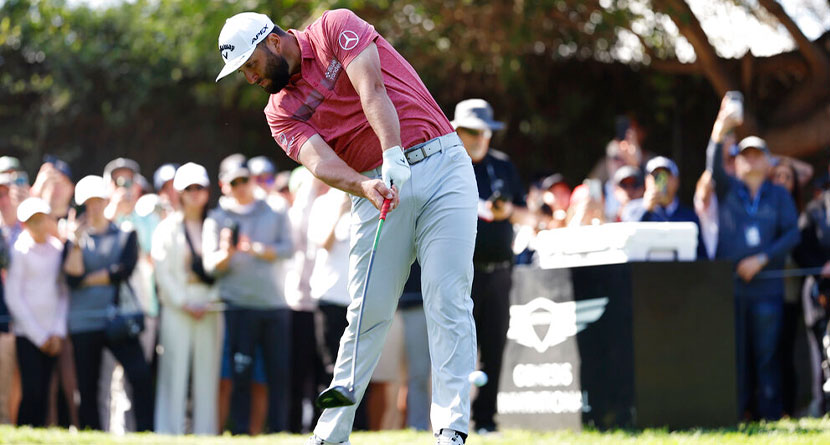Golf’s ruling bodies are taking aim at the golf ball with a proposal Tuesday that give tours the option to require a ball that goes about 15 yards shorter for the biggest hitters.
The U.S. Golf Association and Royal & Ancient Golf proposed a “Model Local Rule” that would take effect in January 2026. Still to come is five months of feedback, and most critical to the process is whether the PGA Tour and other top circuits go along with it.
The decision comes from the “Distance Insights Project” that was released in 2020 and suggested that a steady increase in distance — with average gins of about 30 yards by PGA Tour players in the last 25 years — was not good for the game.
“Not doing something is borderline irresponsible,” Mike Whan, CEO of the USGA, said during a video conference call Tuesday.
The Overall Distance Standard was created in 1976 to indicate potential distance of drivers by the longest hitters. It was updated in 2004 to change the swing speed in the test from 109 mph to 120 mph, while raising the maximum distance to 320 yards.
The new proposal is to test swing speeds at 127 mph while leaving the maximum distance the same. That means golf balls used today would not meet the standard — the faster the swing, the farther it goes — and companies would have to design golf balls for elite competition that fly shorter.
According to Golf Digest, no one on the PGA Tour has an average swing speed of 127 mph, though some players have registered a speed that fast on occasion.
The Model Local Rule effectively leads to two sets of rules — one for the elite and one for the casual golfer — which goes against a centuries-old game that took pride in having the same set of rules for everyone.
This proposed Model Local Rule is intended for use only in elite competitions and, if adopted, will have no impact on recreational golf.
Learn more about today’s announcement from the USGA and @RandA 👇
— USGA (@USGA) March 14, 2023
Acushnet Co. spoke out against the proposal. The company that makes Titleist — the golf ball that has long dominated the market — said bifurcation of the rules would cause a divide between the elite and the recreational players and add confusion.
The ruling bodies said the Model Local Rule would not apply to the women’s game because golf courses still have room to accommodate their increases in distance.
“The proposal of golf ball bifurcation is in many respects a solution in search of a problem,” said David Maher, president and CEO of Acushnet. He said some players would be affected differently than others in adapting to a shorter golf ball, and that multiple versions of golf balls on the market would lead to confusion.
Whan and Martin Slumbers, CEO of the R&A, said the local rule would apply at the U.S. Open and British Open. It would be up to Augusta National and the PGA of America to decide if a shorter golf ball would be required at their majors.
The PGA Tour said in a statement it would continue with its own analysis while working with the governing bodies over the next five months.
“The tour remains committed to ensuring any future solutions identified benefit the game as a whole, without negatively impacting the tour, its players or our fans’ enjoyment of our sport,” the statement said.
The PGA of America said it was opposed to any change that would make the game less fun for the recreational golfer, and that it was pleased the focus on Tuesday’s proposal was not aimed at those golfers.
“We are not in favor of bifurcation and do not anticipate individual clubs implementing such a Model Local Rule as it is meant for elite players,” the PGA said. As for the PGA Championship, it noted 2026 was too far away and it would need more specifics before deciding if it would adopt the local rule.
A Model Local Rule allows for certain rules to be applied in elite competitions without affecting the recreational game, which has been flourishing since the COVID-19 pandemic. Most recently, the USGA and R&A created such a rule that limits the length of the shaft in drivers to 46 inches.
In this case, the governing bodies chose to leave drivers alone and concentrate on the ball.
In a notice to manufacturers, however, they noted concerns about the face of drivers becoming thinner with repeated use and created a “trampoline effect” that makes the ball go farther. Rory McIlroy recently had to switch drivers because of that.




